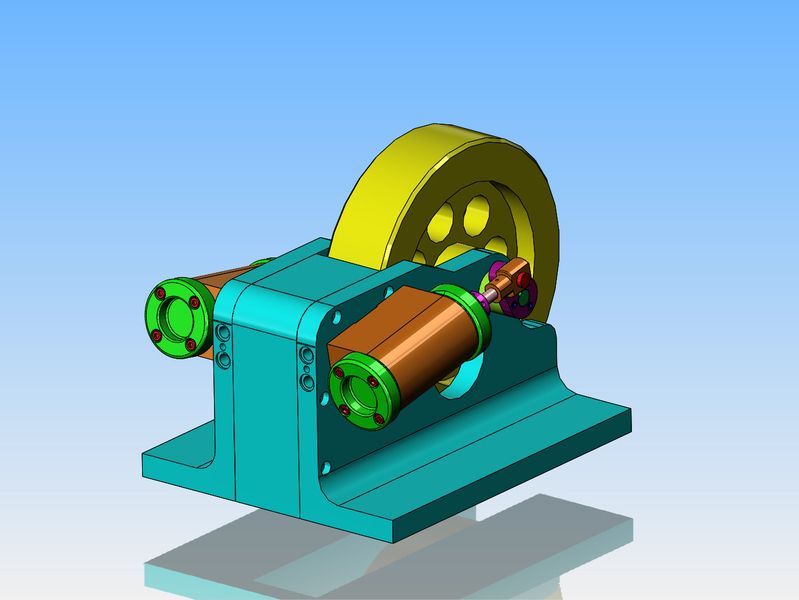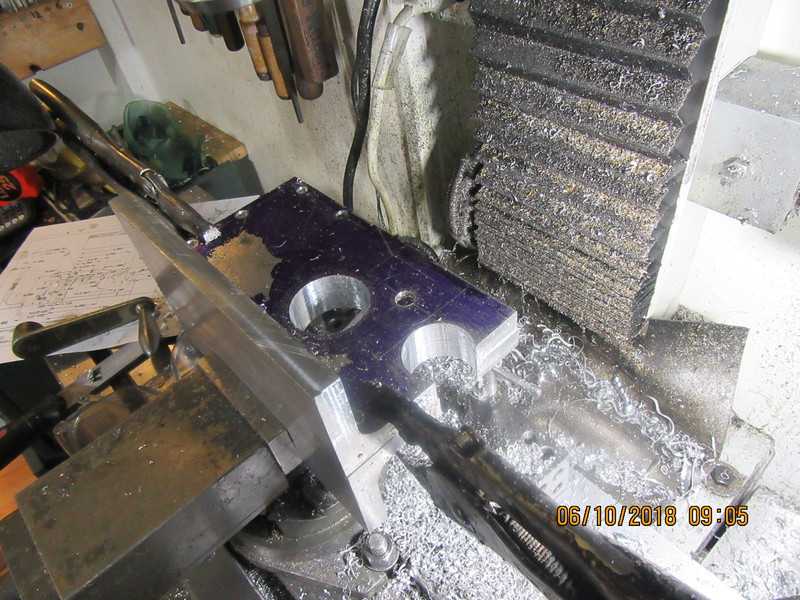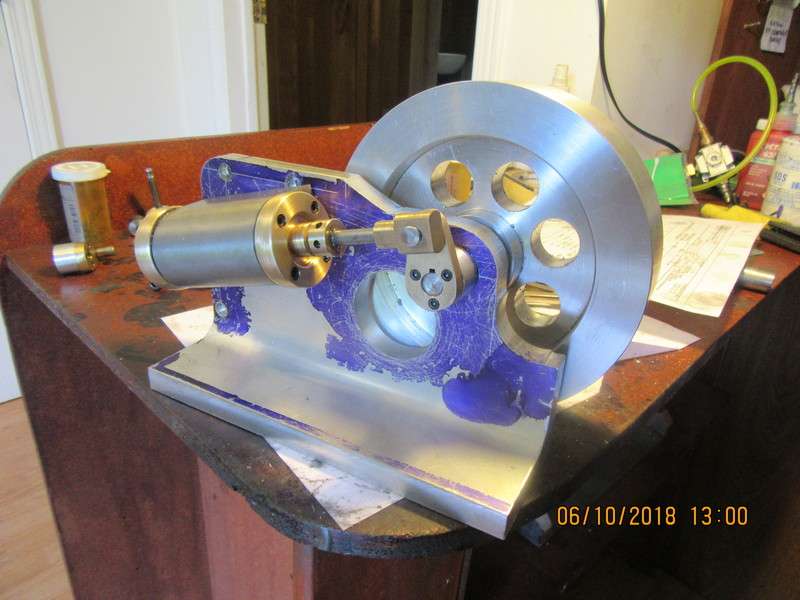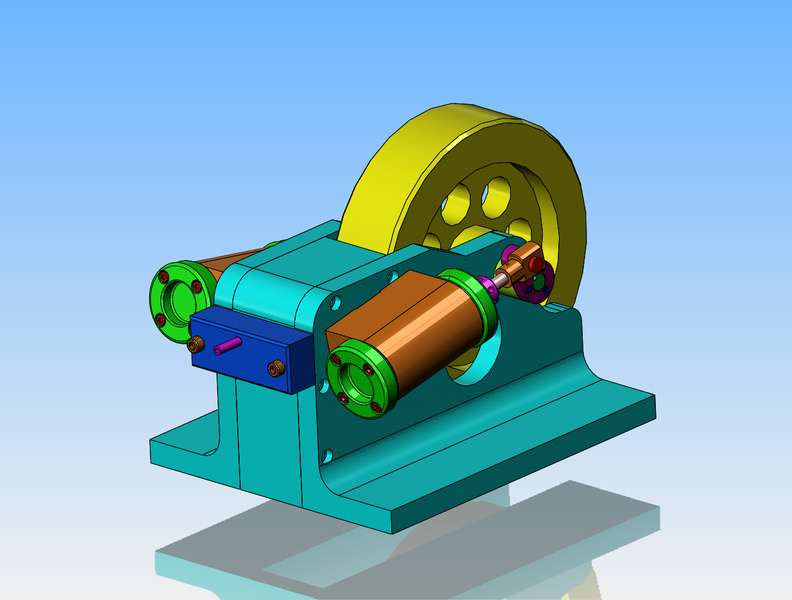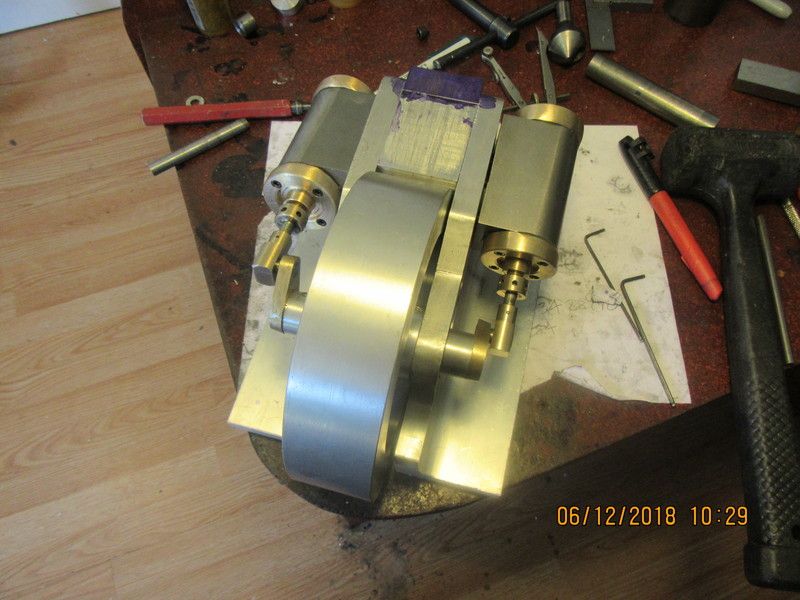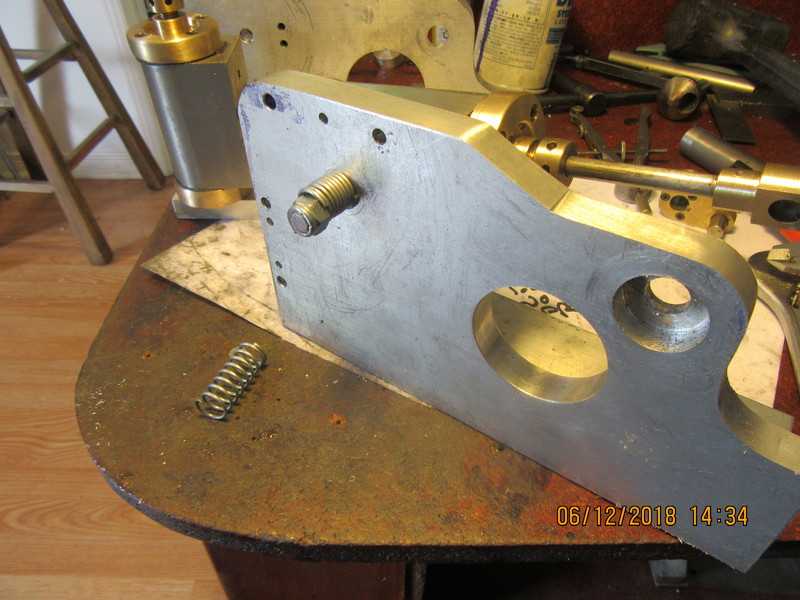One more pretty picture before I go to bed. By putting a .045 deep counterbore at each port opening and a #10-24 threaded hole between them, I can bolt on my valve block with internal porting and set rubber O-rings in the counterbores to seal everything up. There may even be a possibility of building a reverse into the valve block, but my mind hasn't got that far yet.---And yes Charles, I plan on dowelling everything to maintain the relation ship between all the components of the frame.
